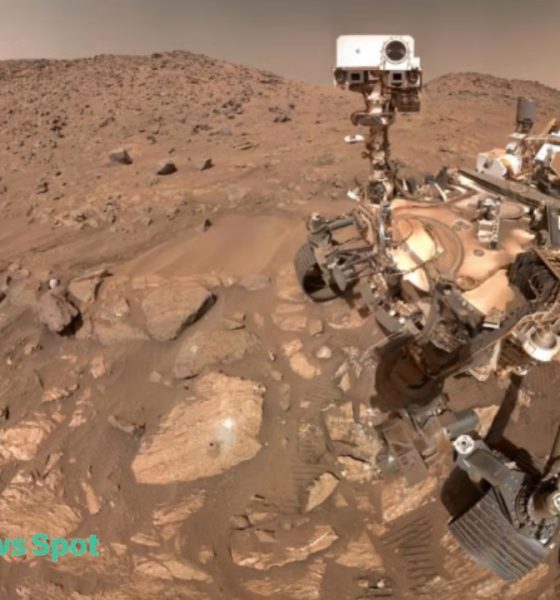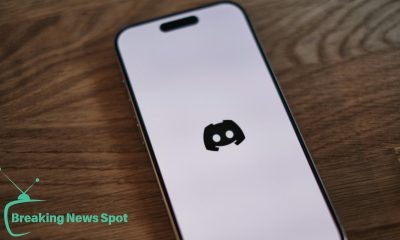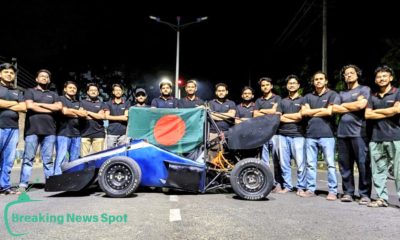Tech
Possible signs of ancient life on Mars are discovered by a NASA rover.
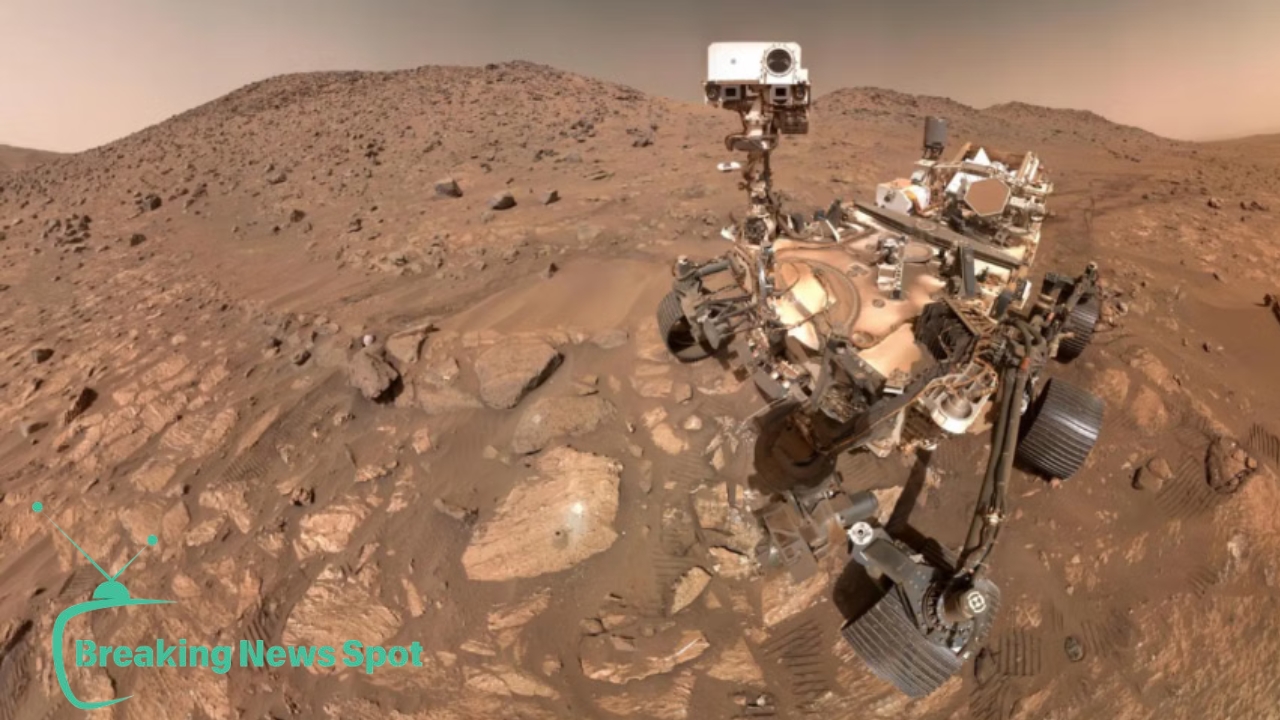
The Perseverance of NASA According to study that was published on September 10 in the scientific journal Nature, the Mars rover may have found signs of ancient microbial life on Mars.
NASA said the results are based on a rock sample that was taken in Jezero Crater, an old dry riverbed that used to supply water to the planet’s basin. ‘Cheyava Falls’ is the name of the rock that was sampled in 2024 when the rover studied a feature known as Bright Angel.
According to NASA, the sample, now known as “Sapphire Canyon,” included mineral patterns and chemical compounds that scientists believe could be potential biosignatures—features that may be connected to biological activity but need more research before any inferences about life can be made.
Within the sedimentary rocks, Perseverance’s sensors found organic carbon, sulfur, phosphorus, and oxidized iron—elements that potentially sustain microbial metabolisms on Earth.
Additionally, they discovered iron-rich minerals such as greigite (iron sulfide) and vivianite (hydrated iron phosphate), which are known to occur in conjunction with microbial activity or decomposing organic debris. However, the data is equivocal since these mineral fingerprints may also be created by non-biological events.
The finding, which contradicted previous theories that only older Martian formations may retain traces of life, was surprising since it originated from relatively fresh sedimentary rocks, according to experts. If verified, the finding would indicate that Mars was habitable later in its history than previously thought.
Since it began working at Jezero Crater in 2021, Perseverance has gathered 27 rock cores for analysis. In addition to continuing its research, NASA intends to utilize the rover to test materials for possible spacesuits and monitor environmental conditions in order to get ready for future human flights.
Tech
Gen Z selected Nepal’s new prime minister over Discord before the announcement was made.
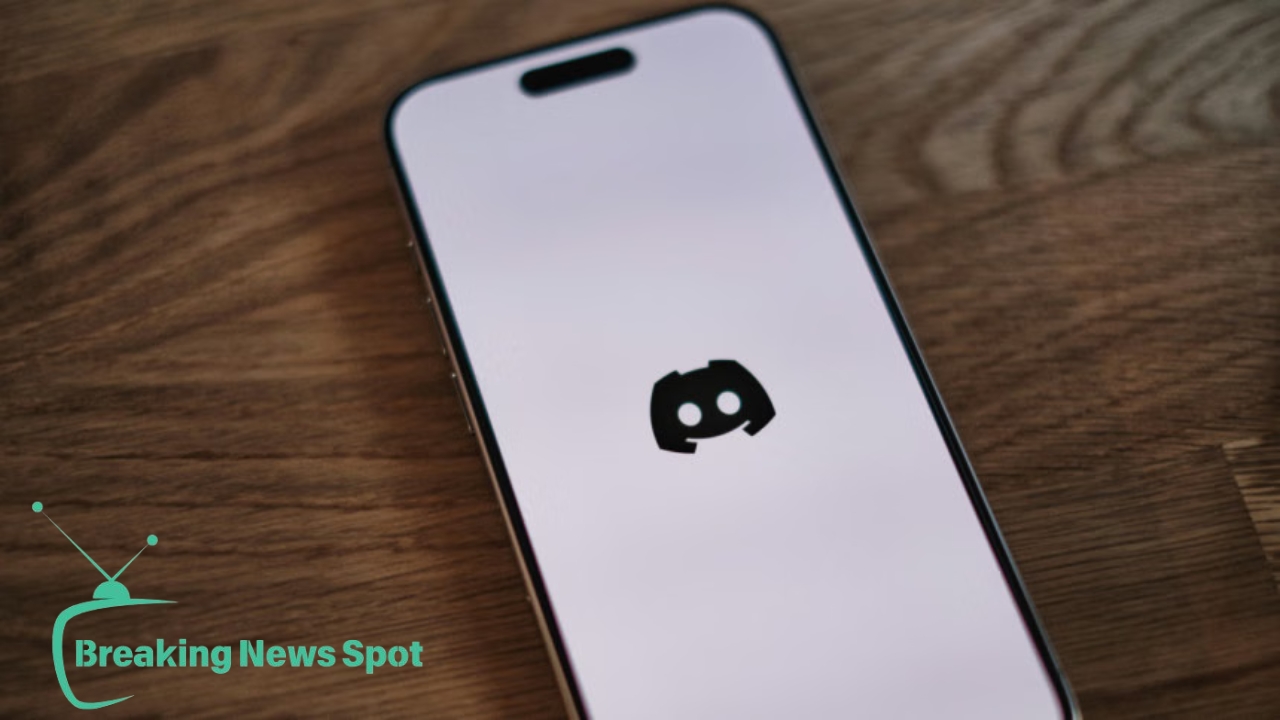
Discord is a social networking service more commonly associated with online gaming, but last week hundreds of teenagers used it to support Nepal’s future leader, giving the nation’s political dilemma a new dimension.
Following weeks of turmoil, their candidate, former Nepalese Chief Justice Sushila Karki, was sworn in as Nepal’s first female prime minister on September 12 and led an interim administration.
After officials in the Himalayan state tried to limit social media use, Generation Z (those born approximately between 1997 and 2012) took the lead in the demonstrations, which were mostly against corruption.
Using internet platforms, protesters—many of whom were in their teens and twenties—organized marches, disseminated information, and ultimately cast ballots for possible candidates. As reported by India Today recently, the most well-known center was a Discord server dubbed ‘Youth Against Corruption’, which at its height had over 130,000 members.
In the last round on September 10, more than 7,713 ballots were cast, and Karki received a majority of more than 50% of the vote, according to a recent article from the South China Morning Post. Prior to her formal appointment on September 12, Karki met with General Ashok Raj Sigdel, the leader of Nepal’s army, and President Ram Chandra Poudel.
It’s unclear, though, if the Discord vote had a direct impact on Sushila Karki’s official appointment as Nepal’s prime minister.
Discord was first created in 2015 by Jason Citron and Stanislav Vishnevskiy as a way for gamers to interact while playing. Since then, a younger audience has been drawn to its straightforward interface and combination of text, audio, and video features, particularly during the pandemic when usage grew well beyond the realm of games.
Hundreds of thousands of people can join Discord servers, forming large online communities with news, debate, and coordination channels.
The platform turned as a vital organizing tool for the protests in Nepal. In addition to the leadership vote, volunteers established channels for fact-checking, emergency support, and logistics within the Youth Against Corruption site. With the use of this system, protesters were able to control information flows in real time while staying away from major social media sites that were prohibited, like Facebook, Instagram, X, LinkedIn, and others.
Tech
Bangladesh will be represented at Formula SAE Japan 2025 by the RUET team.
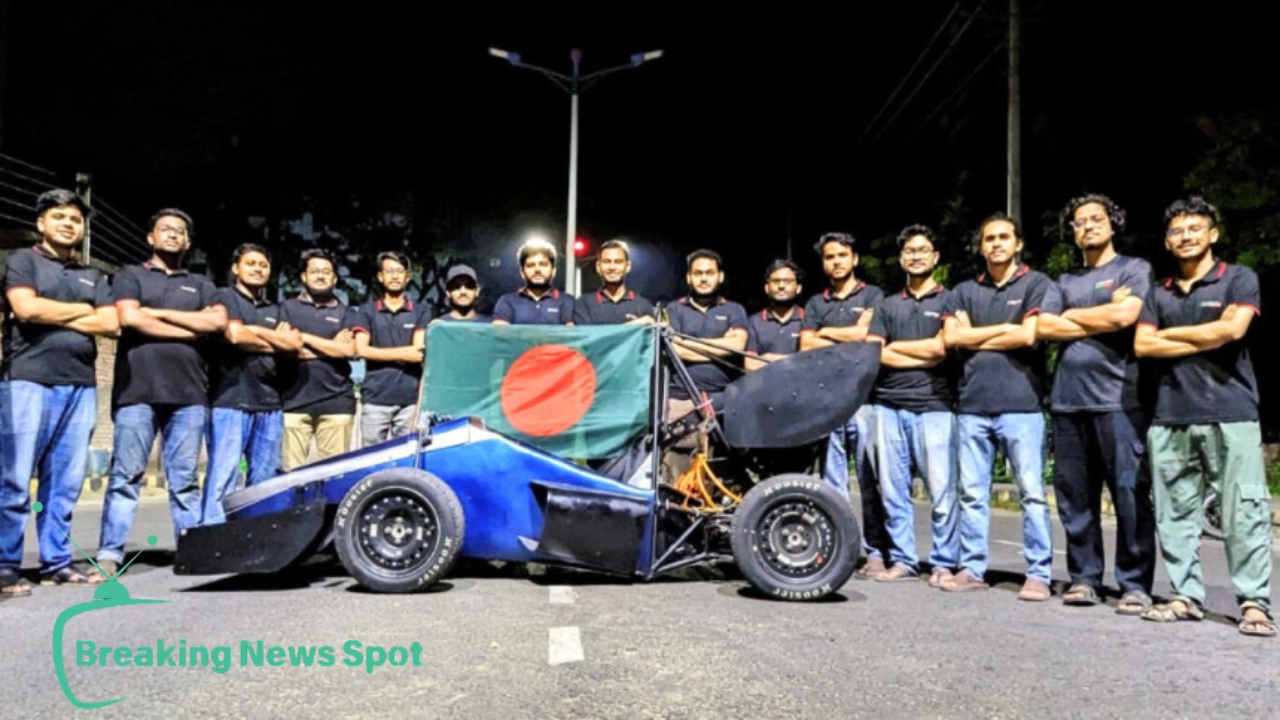
At one of the most prominent engineering design contests in the world, Formula SAE Japan 2025, where students construct and compete in formula-style electric vehicles, Team Crack Platoon from Rajshahi University of Engineering and Technology (RUET) is representing Bangladesh.
At Aichi Sky Expo, Formula SAE Japan 2025 got underway on September 8 and will run through September 13. Ninety teams were chosen this year from a large number of international applications; the only Bangladeshi team to make it was Team Crack Platoon from RUET. Since no other South Asian team has made it to the competition this year, they are also representing the area.
The Society of Automotive Engineers (SAE) organizes the competition every year, which is widely regarded as the “Olympics of Engineering Students” and challenges competitors to design, build, and test automobiles that adhere to exacting international standards. Teams are graded on many things, such as their design, cost analysis, business presentation, and how well they stay on track with their performance.
Team Crack Platoon will be racing with CP-Astrion, their third-generation electric race car. It has a lightweight composite frame, wings that are better at reducing drag, and a battery system backed by Tesla. As the team says, this car was built to meet the world safety and performance norms of Formula SAE.
“We’re excited to learn from the best and show that Bangladeshi students can compete on this global stage,” team captain Saadman Saqueeb stated in reference to the tournament. The tale of CP-Astrion, which was created with little funding but a great deal of enthusiasm and collaboration, is what sets us apart.
The group believes that by sharing their experience, other students will be inspired to investigate innovation. “We want our journey to demonstrate that Bangladesh can produce world-class engineering,” Saqueeb continued. We believe that if we can do it, anybody can, and we hope that this encourages creativity and experiential learning throughout South Asia.
There are 28 people in the entire Crack Platoon team, and they work in several departments like design, business operations, electrical, and mechanical. Team Captain Saadman Saqueeb, Electrical Head Sudipto Mondal, Mechanical Head Md Habibullah, Design Head Md Nayem, and Business Head Rafiul Haque Ayon are in charge of the sectors.
Tech
Is the iPhone 17 a good purchase?
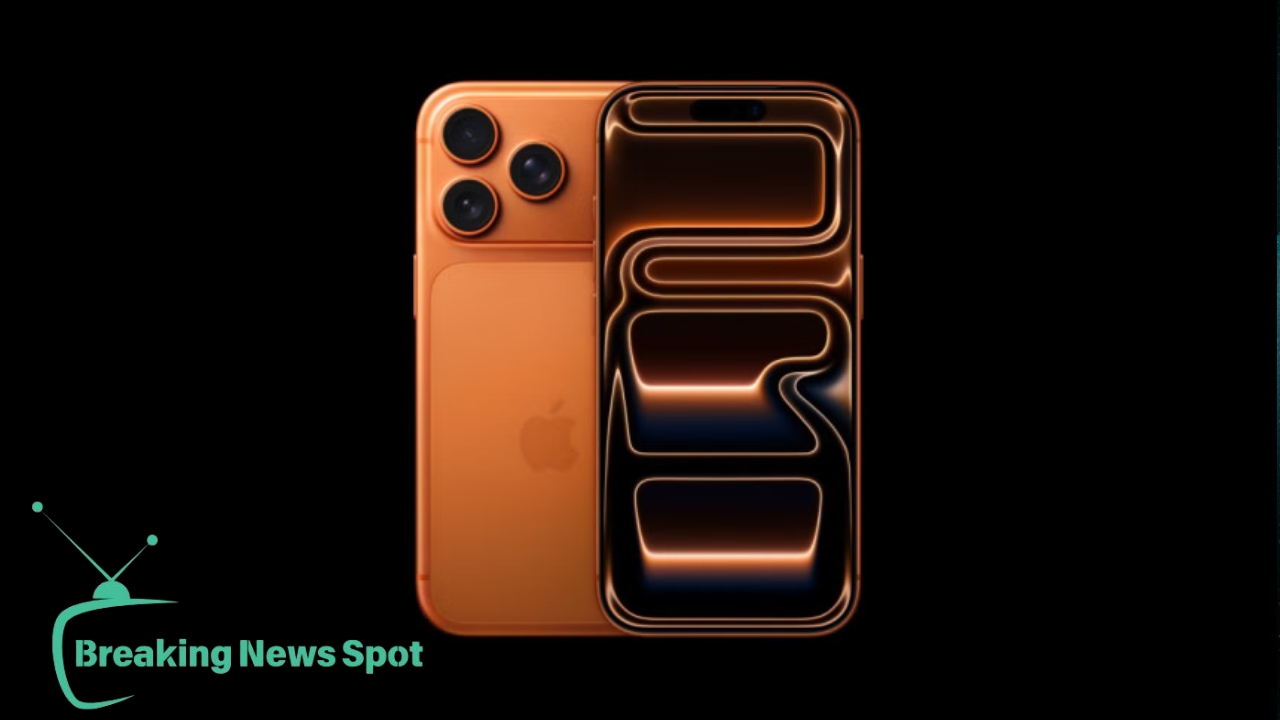
Apple requests that we upgrade every September. And every September, we question if the slick new iPhone is worth breaking the bank again or if the model from the previous year is still enough. With the release of the iPhone 17 range this year, the question is more pertinent than ever. Although Apple has made some significant adjustments, Android flagships are now more competitive than ever. Let’s dissect it, then. How much better is the iPhone 17 than the iPhone 16 from the previous year? And how does it compare to Android’s strengths if you’re already considering making a large purchase?
iPhone 16 vs iPhone 17
First, it should be noted that Apple hasn’t made many changes to its price. As with the iPhone 16, the starting price for the iPhone 17 is at $799. In contrast to the 16’s 128 GB of storage, this one comes with 256 GB as standard. The iPhone 17 Pro, which starts at $1,099, maintains the same price range as its predecessor but does away with the less expensive 128 GB option. Apple is subtly trying to get you to pay more, but the extra storage provides you piece of mind.
The A18 chip from last year has been replaced with the new A19 chip in terms of performance. It is quicker, more power-efficient, and specifically suited for the AI-driven future that Apple often promises since it is based on a 3 nm technology.
It becomes interesting with displays. ProMotion 120 Hz refresh rates, which were previously exclusive to the Pro models, are now available on the regular iPhone 17. Animations should pop with a smoothness that you won’t want to return to after you’ve experienced it, and scrolling should feel buttery smooth. The iPhone 17 Pro, on the other hand, is one of the brightest smartphones available, pushing its display to 3,000 nits at its highest brightness. This is far more important than you might imagine for a place like Bangladesh, where it’s usually difficult to see outside.
Additionally, the battery life has increased, particularly for the Pro versions. According to Apple, the Pro and Pro Max can play videos for up to 33 hours each. Compared to the 27 hours of the iPhone 16, that is a decent improvement. This, together with the efficiency improvements brought forth by the A19 processor, should make the iPhone 17 one of the most dependable all-day phones available.
Lastly, the basic iPhone 17 now has an updated 18 MP selfie camera in addition to twin 48 MP Fusion cameras on the primary and ultra-wide lenses. That translates into clearer images in every situation for casual users. The Pro versions come with what Apple refers to as the Pro Fusion Camera System, which has a 48 MP primary, ultra-wide, and telephoto lens with an 8x real optical zoom and a 40x digital zoom. The iPhone 16 Pro from the previous year had a maximum of 25x digital and 5x optical. This improvement alone makes the Pro worth taking into consideration if you enjoy photography or travel regularly.
Taking everything into account, if you are upgrading from an iPhone 14 or older, the iPhone 17 is a significant improvement. For power users, the enhancements in display, storage, and cameras—especially on the Pro models—are substantial enough even when compared to the iPhone 16. The basic model of the iPhone 17 could be this year’s sweet spot for everyone else.
iPhone 17 Pro vs Samsung Galaxy S25 Ultra
The Galaxy S25 Ultra is just another example of Samsung’s Ultra range, which has long been Apple’s shadow rival. It costs more than the iPhone 17 Pro, with a starting price of $1,299, but it has a titanium frame, a 6.9-inch QHD+ display, and compatibility for the S Pen. According to some early test evaluations, the Snapdragon 8 Elite for Galaxy, a specially tailored CPU, outperforms the iPhone in multi-core performance, even if Apple still dominates the single-core market.
The camera system is, of course, the headline. With a 200 MP primary sensor, a 50 MP ultra-wide, and some of the most sophisticated zoom features available in a phone, Samsung equips the Ultra. Excellent video recording quality is provided by 10-bit HDR, which gives film a cinematic appearance. If you are prepared to spend the higher price, the S25 Ultra is a true powerhouse when combined with a 5,000 mAh battery that easily lasts longer than 17 hours.
iPhone 17 vs Google Pixel 9 and 10 Pro
With prices beginning at $999, Google’s Pixel 9 Pro has always operated on a distinct principle. Google is more interested in computational photography than megapixels. From real-time translation to Google’s renowned photo-editing wizardry, the Tensor G4 processor is more focused on AI capabilities than sheer performance. Consistency is a strength of the Pixel. You may point and shoot in nearly any situation, and the result will appear to have been professionally edited.
The Pixel 10 Pro, which retails for $1,099, also follows its trademark strategy of prioritizing AI above raw specifications. It excels at daily AI tools and computational photography, from smooth translations to simple picture editing, thanks to the new Tensor G5 processor. Although they may not appear to be as good as the iPhone 17 or Galaxy S25 Ultra, the cameras’ consistency in real-world photos is difficult to match. The Pixel 10 Pro seems intelligent, useful, and high-end when you combine Google’s clean Android with frequent upgrades.
iPhone 17 vs OnePlus 13
Then there is the flagship killer that is affordable, the OnePlus 13, which retails for $899. Even if it doesn’t have the same status as Samsung or Apple, it is unavoidable this year. The phone’s 6.82-inch LTPO AMOLED screen can reach a peak brightness of 4,500 nits, which is even brighter than the iPhone 17 Pro. Even while its camera system isn’t as good as Samsung’s or Google’s, it still performs competitively in speed tests thanks to its Snapdragon 8 Elite CPU, especially when it comes to 6x zoom photos that can compete with dedicated cameras. If you want premium features without blockbuster prices, the OnePlus 13 is the phone for you. Although it doesn’t quite rule any one market, taken as a whole, it offers great value.
Final verdict
What does this mean for the iPhone 17 now? What matters most to you will determine the response.
The iPhone 17 is the clear pick if you are already a part of the Apple ecosystem, wearing an Apple Watch and AirPods. The Pro versions are now real workhorses for professionals and producers, while the standard model offers you more value than ever.
However, the choice becomes more complex if you are willing to change your mind. Best-in-class cameras, a large screen, compatibility for styluses, and unadulterated power make the Samsung Galaxy S25 Ultra the phone for those who want it all. For people who value software intelligence and image quality above specifications, the Google Pixel 9 Pro is ideal. And if you want to save a few hundred bucks without feeling like you’re sacrificing quality, the OnePlus 13 is a strong contender.
So, is it worthwhile to get the iPhone 17? Absolutely, as the iPhone 13 or 14 is a major improvement in practically every way. The Pro versions in particular provide enough upgrades to entice people who use their phones seriously, whether for content production or extensive everyday use, even if you have a 15 or 16.
The playing field is more level than it has ever been in 2025. Like the S25 Ultra, Pixel 9 Pro, and OnePlus 13, the iPhone 17 is an amazing gadget. These days, choosing the one that best suits your lifestyle, finances, and ecology is more important than deciding which is objectively the greatest.
Whatever you do, though, you are not in any way making a poor decision. However, the iPhone 17 presents a strong argument if you have been waiting for Apple to defend your next upgrade.
-

 Tech6 months ago
Tech6 months agoDo you frequently use ChatGPT? A study says that you’re lonely.
-

 Sports6 months ago
Sports6 months agoMessi comes back and scores in less than two minutes.
-

 Sports7 months ago
Sports7 months agoThey will make IPL a hit
-

 Entertainment7 months ago
Entertainment7 months agoDue to his mental health issues, David Kushner has cancelled his tour.
-

 Entertainment7 months ago
Entertainment7 months agoWhy did Juhi reject Salman?
-

 World7 months ago
World7 months agoIsrael continues its Gaza attack, killing a journalist and issuing evacuation orders.
-

 Fashion7 months ago
Fashion7 months agoBefore getting your ears pierced, here are some things to consider
-

 Tech7 months ago
Tech7 months agoXiaomi brings Redmi Note 14











